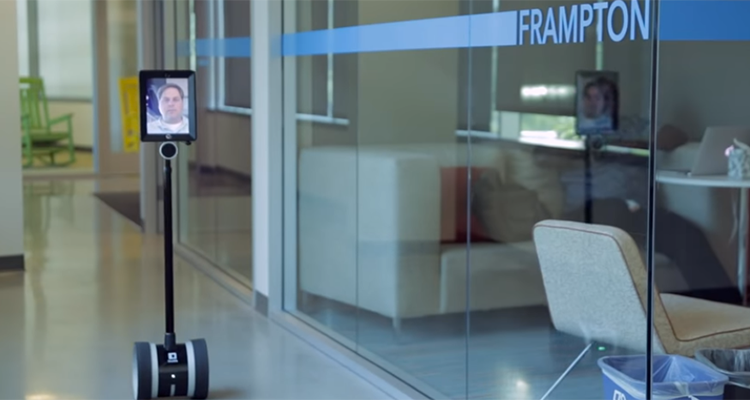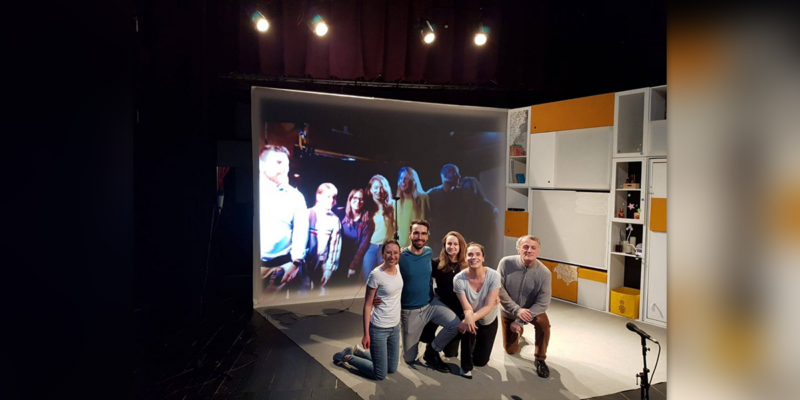You Got Drones in My Huddle Room
If you read our industry press at all (and I hope you do) you will note large numbers of articles on two subjects:
1. The “Huddle Room”
and
2. Drones
When two subjects like these fascinate an industry, it is almost inevitable that they combine in some way.
(I consider this the “you got peanut butter on my chocolate” philosophy of product development).
Don’t get me started on drones. I have devoted parts of previous columns to the fact that our industry has gone drone happy. However, I have mostly referred to the kind that you worry about getting caught in the intake of a jetliner.
Now, not everyone with the drone is an annoying neighbor. Drones are used for lots of useful purposes like site surveys, damage assessment and getting that aerial shot of a company’s entire staff in the parking lot that seems to be necessary for all corporate videos now. So let’s just say that some drones are really useful. We will come back to them.
The “huddle room” is yet another fast-growing segment of the industry, even if nobody can agree on the precise actual definition and what makes it different from any other small meeting room. (As a U.S. Supreme Court justice once said, “[I can’t define it], but I know it when I see it.“) It seems that the concept developed mostly because of the growing need for connected meeting rooms for team collaboration. Interestingly, I see many of them in use and lots of times they consist of a small circle of people, each staring into their own notebook computer and sharing things online. However, the important thing about the huddle room is that it is a connected room, and those people are also participating with colleagues in other locations. In this way, the huddle room has gone a long way toward equalizing participation between the near end and the far end, which is a traditional problem in what we call “telepresence.”
But the huddle room itself can go only so far towards the inclusion of remote participants. The biggest portion of this has to do with confinement to the room itself. I participate in a lot of videoconferences (forgive me, telepresence meetings) and I am always left wondering the same thing that everybody wonders when they are a distant participant, namely “I wonder what they’re saying outside the room.” Meetings often include lunch, dinner or some other “out of the room” event, during which decisions are often made. I have participated in many meetings where we break for lunch or even for coffee and when I return the discussion has changed because of something that happened at the water cooler.
 Enter the drone. Or, as we term it in the industry, the teleconferencing robot. For the last couple of years, I have extensively used an inexpensive teleconferencing robot from DoubleRobotics, which uses an iPad for its intelligence (and which shows the face of the distant participant, becoming the “head” of the robot).
Enter the drone. Or, as we term it in the industry, the teleconferencing robot. For the last couple of years, I have extensively used an inexpensive teleconferencing robot from DoubleRobotics, which uses an iPad for its intelligence (and which shows the face of the distant participant, becoming the “head” of the robot).
Drones (or, more properly, remotely operated vehicles) fulfill a function. In an aerial drone, they allow us to experience flight while standing on the ground. In a telepresence meeting, they allow us to wander. Using a telepresence robot, you can participate in some of the things that happen at a meeting without actually having to travel to the site. For instance, I have recently participated in a tour of a new world headquarters and a tour of a plant floor, in two cities, on the same day. I have made a presentation, recorded the meetings and taken photographs during the tour. Unfortunately, I have also failed to check my battery level before a meeting, but, hey — I’m learning.
 But the important function of a teleconferencing drone or robot is a psychological one that is often underappreciated. The robot puts you at the table with a presence in the room. Beginning with Marshall McLuhan, we have understood that the feeling of “presence” is one of the things that keeps us mentally attached in a meeting or event. I know that not only do I feel more conscious of the fact that the robot is in the room, leading me to NOT check my email or watch the latest YouTube video when the conversation got boring, but it’s also a constant reminder to the rest of the group that I am an equal participant. This feeling of presence and equality is one of the reasons that I have long been a proponent of virtual reality meetings. But that is another story. In the meantime, I will wobble around to today’s conferences in my robot.
But the important function of a teleconferencing drone or robot is a psychological one that is often underappreciated. The robot puts you at the table with a presence in the room. Beginning with Marshall McLuhan, we have understood that the feeling of “presence” is one of the things that keeps us mentally attached in a meeting or event. I know that not only do I feel more conscious of the fact that the robot is in the room, leading me to NOT check my email or watch the latest YouTube video when the conversation got boring, but it’s also a constant reminder to the rest of the group that I am an equal participant. This feeling of presence and equality is one of the reasons that I have long been a proponent of virtual reality meetings. But that is another story. In the meantime, I will wobble around to today’s conferences in my robot.
However: Could somebody please open the door to the meeting room? I’m a little late, I had to wait for somebody to come along and punch the elevator button for me.
_______
On a final, quasi-related note, please enjoy this “videoconferencing in real life” video:
Top images via DoubleRobotics




